The market system is an economic system marked by the operation of free markets. For the most part, free markets determine societal production, consumption, and prosperity. Within the market system, at the micro level, theoretically speaking, consumer demand, producer supply, and price are the primary determinants of production. As illustrated by the next two images, from a high-level perspective, the circular-flow model often is used to encapsulate how a free-market economy works. In the first image below, households and business firms are depicted as the chief drivers of economic activity. The second image depicts the inescapable role that government plays in a free-market economy
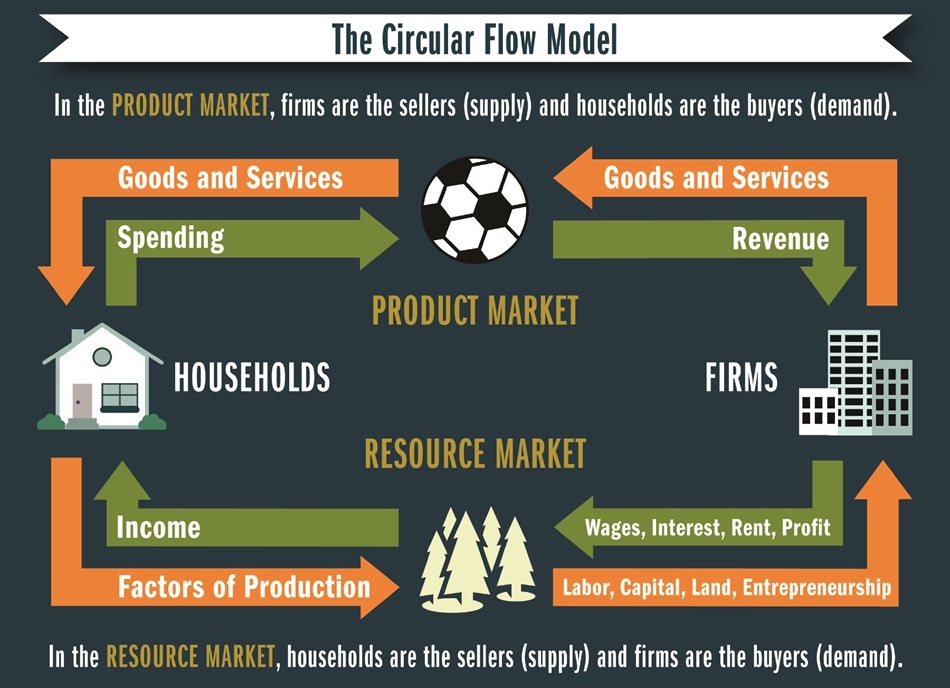
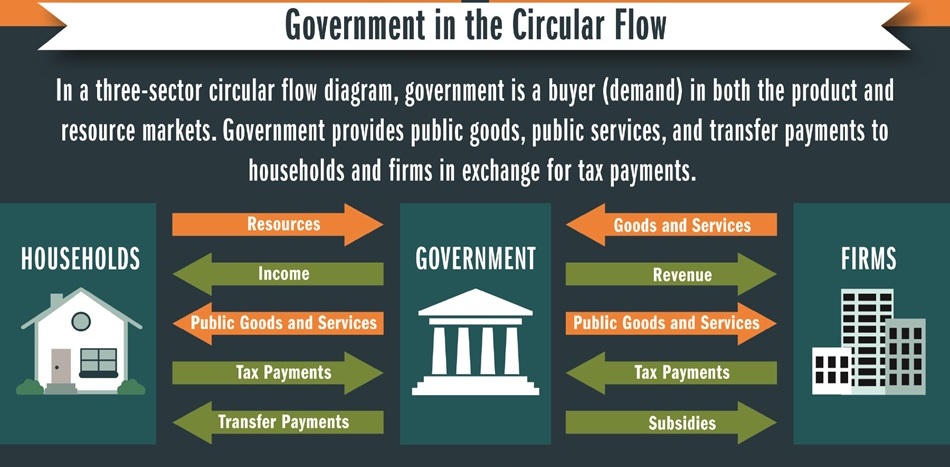
In the following example in the first two graphics below, equilibrium production for bars of candy is reached between consumer (demand) and producer (supply) at a price of $1.20 per bar of candy with 300 bars eventually being produced. The second graphic shows that at a price of $0.80 per bar, consumers would be willing to purchase 400 bars of candy but producers only would be willing to produce 200 bars of candy. In this case, the demand for bars of candy would exceed the supply. On the other hand, at a price of $2.00 per bar, producers would be willing to produce 500 bars of candy but consumers only would be willing to purchase 100 bars of candy. In this scenario at $2.00 per bar, supply would exceed demand. At a price of $1.20 per bar of candy, consumers would be willing to purchase 300 bars of candy and producers would be willing to produce 300 bars of candy, hence, an equilibrium, efficient solution to clear the market.

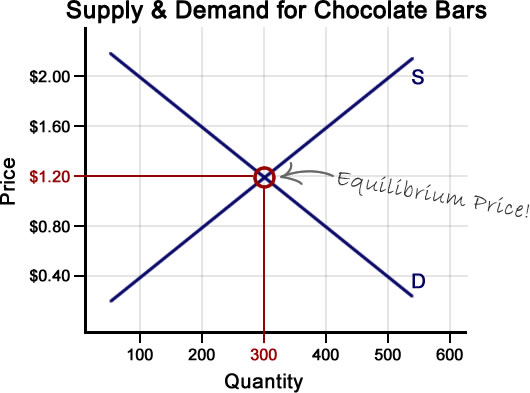
The following three, brief flipbooks provide a general overview of the market system and the general steps or best practices to follow when starting a business.
Read (Free enterprise, the economy and monetary policy - Everyday Economics - FRB Dallas)
Read (Business Smart Modules: download three 60 to 90-minute modules as part of your Business Smart workshop Powerpoint presentations)
Read [Publication 583 (Rev. January 2015): Starting a Business and Keeping Records]
A fundamental tool in business is the tool of accounting. Accounting is used to gauge the overall financial condition of a business. A best practice in owning or managing a business is to have some type of accounting or bookkeeping system in place. An accounting system removes the financial guesswork from managing or owning a business. An accounting system informs business owners and managers precisely where the business stands financially at given points in time. Most businesses utilize either a software or cloud accounting application to perform accounting tasks, and some businesses even opt to take an alternate route by utilizing database and spreadsheet tools to perform accounting chores. The next graphic provides a high-level summary of the accounting process.

The final step in the accounting process involves analyzing accounting statements. The goal of the different types of accounting analyses is to search for performance trends, patterns, strengths, weaknesses, progress, setbacks, and so forth, both internally within the business and externally compared to the performance of similar businesses. The next graphic provides a general overview of the financial-statements analysis process.

The next three graphics are meant to provide a sense of the typical steps involved in, or tasks to be completed when, launching various business ventures. These three cases illustrate the general process for launching a manufacturing, construction, and restaurant business.
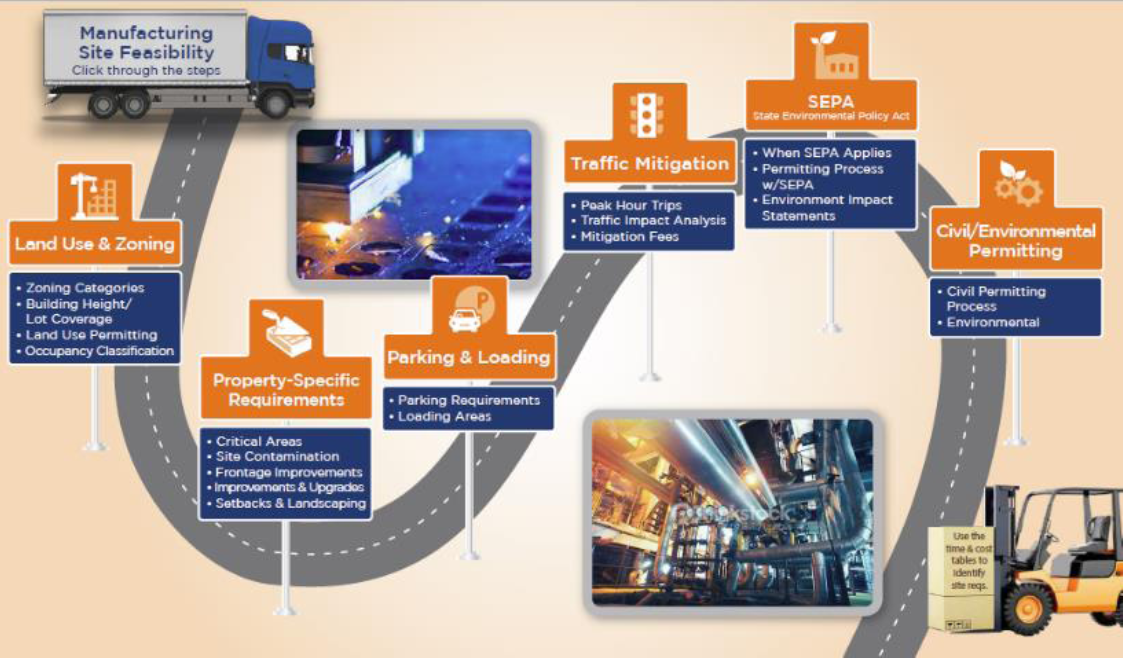
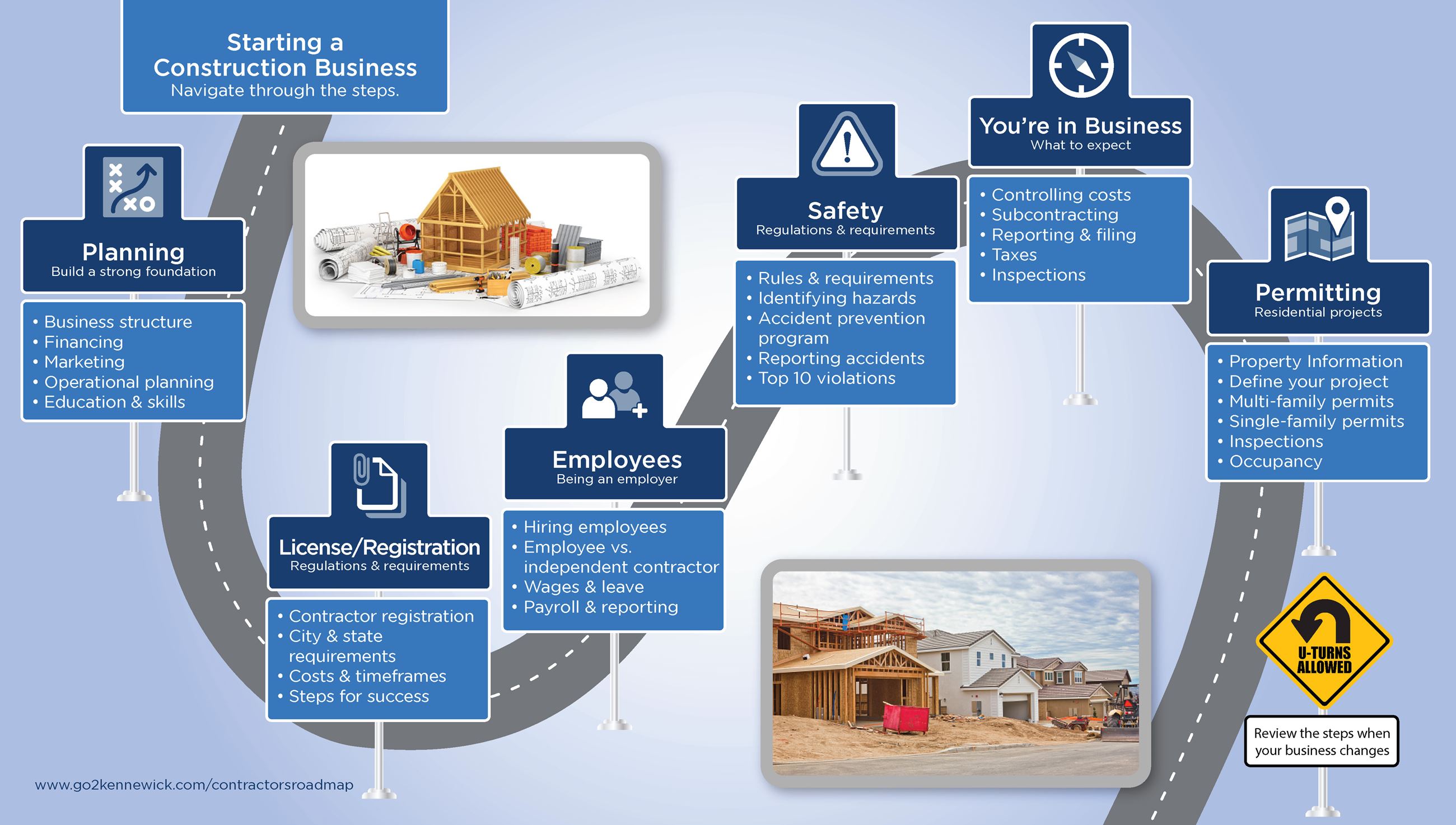
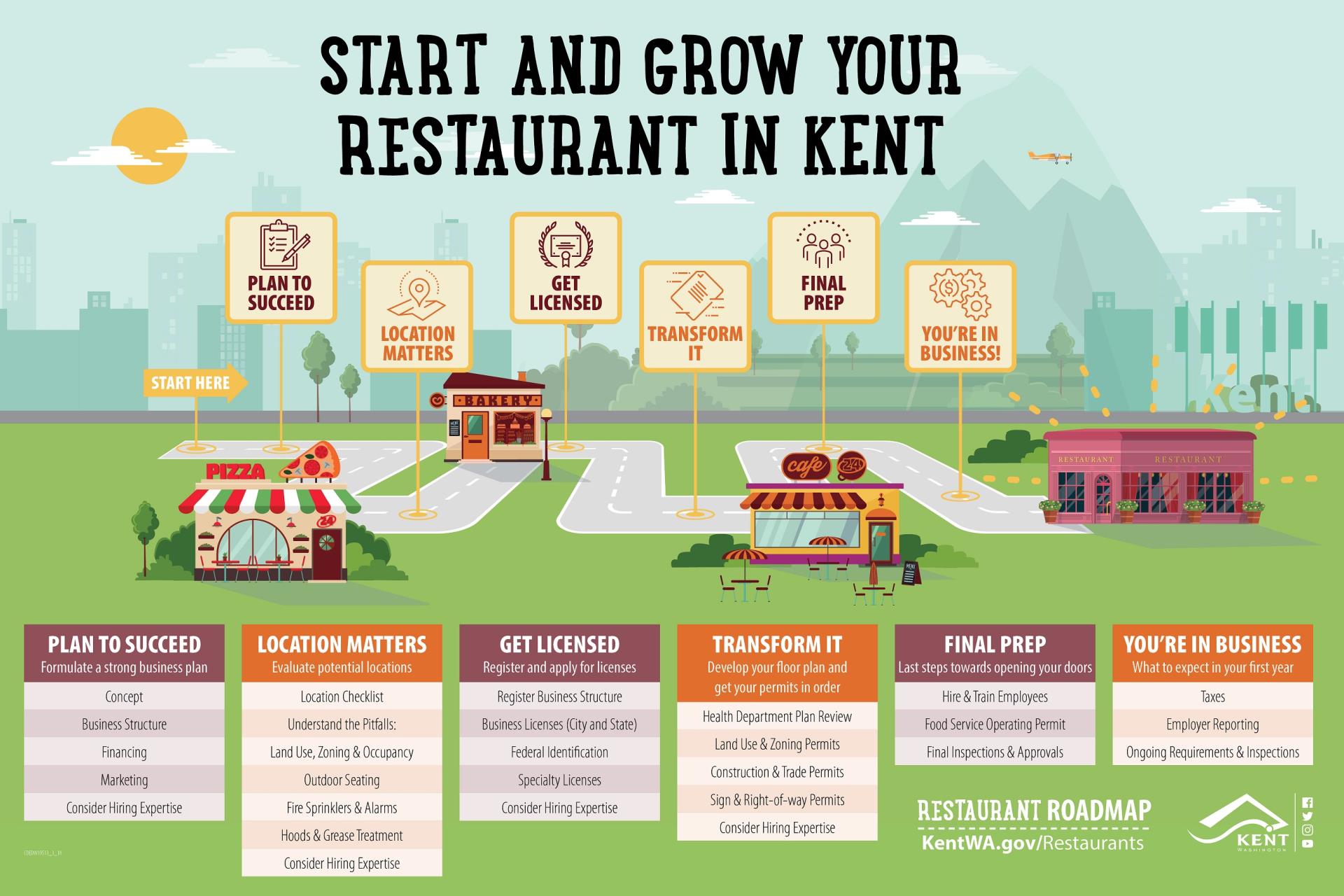
Regrettably, it is not enough simply to start and competently operate a business. A crucial component of business success resides with attracting and maintaining a solid customer base to sustain the business. For instance, it is not enough to own a bright, new, shiny store fully stocked with all kinds of merchandise. There needs to be a steady and constant turnover of inventory in the form of sales for the business to thrive.
I finally wish to offer a somewhat cautious note about entrepreneurship and starting a business. The bad news about starting a business is about 50% of startup businesses fail or exit the market after 5 years of being in business (particularly in the USA). The good news is about 3% more businesses are created and enter the market each year than those that fail or exit the market. In other words, it always seems to be the case that there are more than enough aspiring and ambitious entrepreneurs who wish to take their turns at striking a winning note at the wheel of fortune better known as a the enterprise of business ownership.
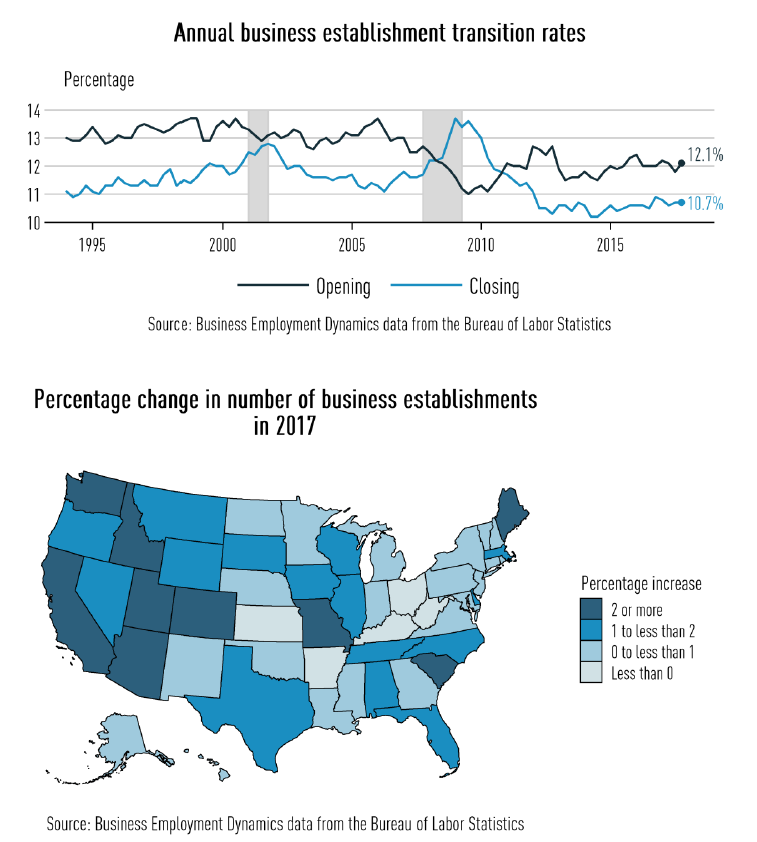

In tandem with the broader sustainable-development movements currently in operation across Earth, at the dawn of the 21st century, the business sector, too, has begun to embrace assorted and varied notions of sustainable growth. As sustainable development relates to the business sector, the discussion typically is framed using terms such as "Corporate Social Responsibility (CSR)" and "Environmental, Social, and Governance (ESG)." In a nutshell, these terms represent different ways in which businesses attempt to assess and achieve their sustainable-development directives.
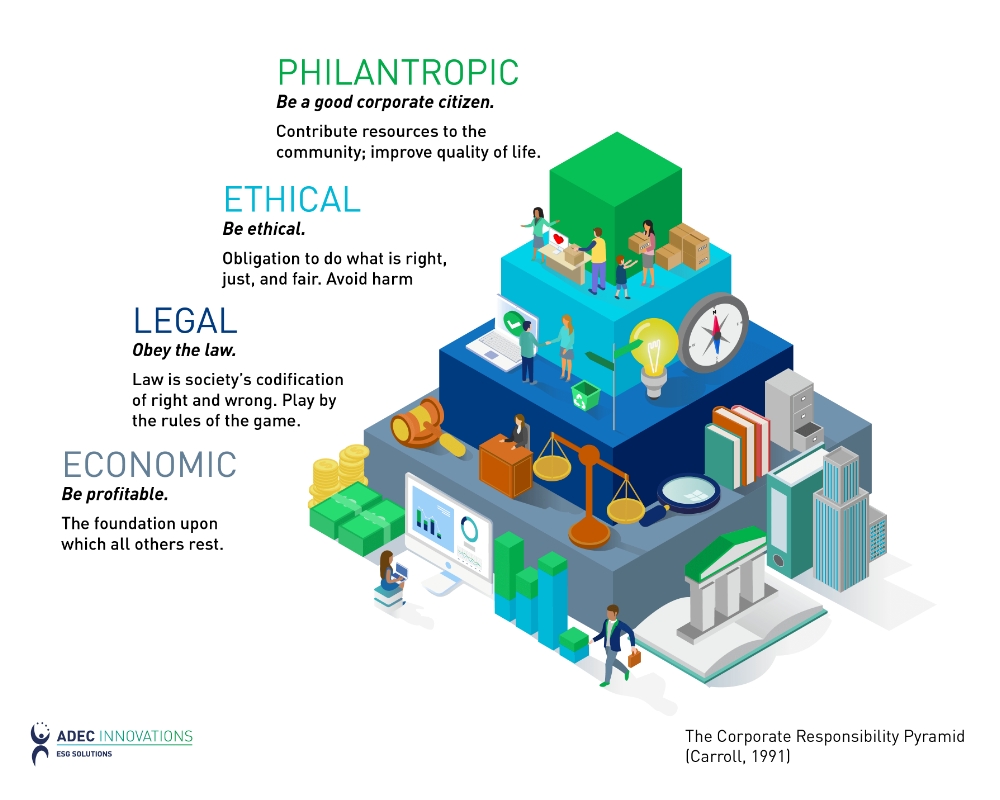
Many readers are familiar with the United Nations' 17 Sustainable Development Goals, which was announced by the UN on 25 September 2015. According to the UN, "The Sustainable Development Goals are a call for action by all countries – poor, rich and middle-income – to promote prosperity while protecting the planet." Perhaps not as familiar to many readers but on a related note, within the business sector, many business leaders look to Dr. Archie B. Carroll's CSR model for guidance in setting forth and attaining their own particular sustainable development initiatives. The image immediately above provides a graphical distillation of Dr. Archie B. Carroll's CSR framework. This framework serves as one guide for corporations to follow in their various corporate endeavors to operate responsibility within the context of the broader societal milieu.
Read (An Introduction to Business v. 2.0 | Dr. Karen Collins)
Scroll up